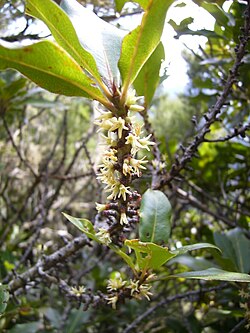| Pleiomeris canariensis | |
|---|---|
 | |
| Branchlet with leaves and flowers. | |
| Scientific classification | |
| Kingdom: | Plantae |
| Clade: | Tracheophytes |
| Clade: | Angiosperms |
| Clade: | Eudicots |
| Clade: | Asterids |
| Order: | Ericales |
| Family: | Primulaceae |
| Genus: | Pleiomeris |
| Species: | P. canariensis |
| Binomial name | |
| Pleiomeris canariensis | |
Pleiomeris canariensis is a species of plant in the family Primulaceae. It is endemic to Canary Islands, Spain.
